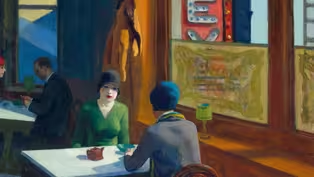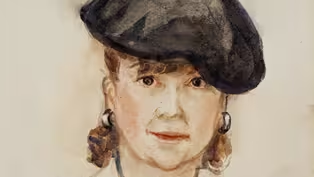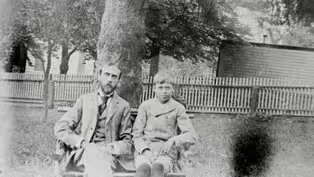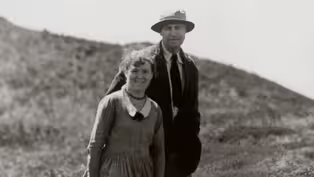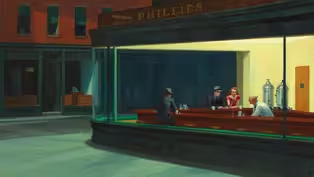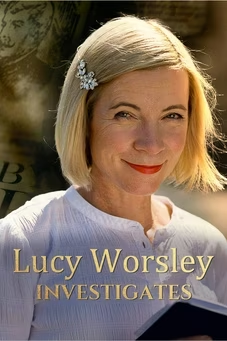
Edward Hopper's work showed a narrow view of New York
Clip: 1/2/2024 | 2m 39sVideo has Closed Captions
Edward Hopper showed no interest in the growing diversity of America.
Edward Hopper painted what he wanted to paint, showing no interest in the growing diversity of America or the social movements happening in New York City. "It's just almost comical for me to imagine Hopper, still in his button-down at his easel, when you have this great Bohemian culture happening right outside the window," says curator Kim Conaty. "And it's not really reflected in the work."
Problems playing video? | Closed Captioning Feedback
Problems playing video? | Closed Captioning Feedback
Support for American Masters is provided by the Corporation for Public Broadcasting, AARP, Rosalind P. Walter Foundation, Judith and Burton Resnick, Blanche and Hayward Cirker Charitable Lead Annuity Trust, Koo...

Edward Hopper's work showed a narrow view of New York
Clip: 1/2/2024 | 2m 39sVideo has Closed Captions
Edward Hopper painted what he wanted to paint, showing no interest in the growing diversity of America or the social movements happening in New York City. "It's just almost comical for me to imagine Hopper, still in his button-down at his easel, when you have this great Bohemian culture happening right outside the window," says curator Kim Conaty. "And it's not really reflected in the work."
Problems playing video? | Closed Captioning Feedback
How to Watch American Masters
American Masters is available to stream on pbs.org and the free PBS App, available on iPhone, Apple TV, Android TV, Android smartphones, Amazon Fire TV, Amazon Fire Tablet, Roku, Samsung Smart TV, and Vizio.
Buy Now
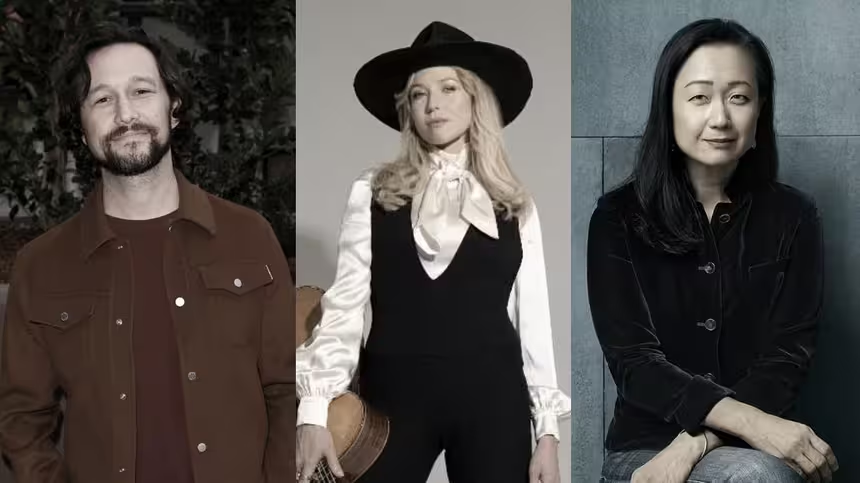
A front row seat to the creative process
How do today’s masters create their art? Each episode an artist reveals how they brought their creative work to life. Hear from artists across disciplines, like actor Joseph Gordon-Levitt, singer-songwriter Jewel, author Min Jin Lee, and more on our podcast "American Masters: Creative Spark."Providing Support for PBS.org
Learn Moreabout PBS online sponsorship(dramatic music) - Hopper's process is so slow and methodical.
It typically took Hopper often about a month to realize a canvas.
Much of the time in between was the thinking, the determining the subject, the sketching, the compositional sketches.
And his output is so minimal as he gets older.
Throughout the decades, we know from the journals that he would finish a painting and one, two days later would be bringing it to the gallery.
So there is a sense that immediately after completion, it was destined for somewhere beyond lingering in the studio.
- The content of your pictures, I think that some people have seen a lot of psychological elements in it, loneliness, isolation, modern man and his manmade environment.
- Those are the words of critics.
And I can't always agree with what the critics say.
You know, it may be true and it may not be true.
It's probably how the viewer looks on the pictures that they really are.
Could that be?
(dramatic music) - I think that Hopper painted the city that he felt needed to be or should be represented, no more, no less.
I don't think Hopper really thought too much about the diversity of the United States.
He didn't think about the migration of people from one region to another.
He painted what he wanted to as an artist.
- The New Negro Movement beginning, really kind of burgeoning in Greenwich Village, the protest that would've been happening through the 50s and 60s, it's just almost comical for me to imagine Hopper, still in his button-down at his easel, when you have this great Bohemian culture happening right outside the window.
And it's not really reflected in the work.
A closer look at Edward Hopper's "Automat" and "Chop Suey"
Video has Closed Captions
Clip: 1/2/2024 | 1m 59s | Edward Hopper displayed a preference for quieter social commentary with his art. (1m 59s)
Edward Hopper's career soared as wife Jo Nivison's faltered
Video has Closed Captions
Clip: 1/2/2024 | 2m 31s | Edward Hopper's career soared while his wife Jo Nivison's faltered. (2m 31s)
Edward Hopper's childhood in Nyack, New York
Video has Closed Captions
Clip: 1/2/2024 | 2m 3s | Edward Hopper was raised in Nyack, where his creativity was fostered by his parents. (2m 3s)
Edward Hopper's simple lifestyle with wife Jo
Video has Closed Captions
Clip: 1/2/2024 | 1m 55s | Edward and Jo Hopper lived an extremely frugal life. (1m 55s)
HOPPER: An American love story
Video has Closed Captions
Preview: 1/2/2024 | 1m 2s | Discover the secrets behind Edward Hopper’s most iconic and enigmatic works. (1m 2s)
HOPPER: An American love story (EAD + ASL + OC Trailer)
Clip: 1/2/2024 | 2m 10s | Discover the secrets behind Edward Hopper’s most iconic and enigmatic works. (2m 10s)
Rare interview footage of Edward Hopper on his process
Video has Closed Captions
Clip: 1/2/2024 | 29m 7s | Edward Hopper joins Brian O'Doherty for a conversation about his process and inspirations. (29m 7s)
Providing Support for PBS.org
Learn Moreabout PBS online sponsorshipSupport for PBS provided by:
Support for American Masters is provided by the Corporation for Public Broadcasting, AARP, Rosalind P. Walter Foundation, Judith and Burton Resnick, Blanche and Hayward Cirker Charitable Lead Annuity Trust, Koo...

